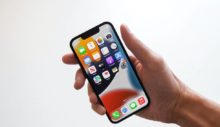
On average, people unlock their phones 110 times daily for messaging, calls, or checking the time. That means that in a day, people get to look at their lock screens many times. For Glance, an Indian-based ad tech company, there’s an opportunity for brands in lock screen ads.
US Android users may get a series of lock screen Ads in the next two months by Glance. The discussion on whether to unveil its services in collaboration with the US wireless carriers is underway. However, Glance is yet to announce its progress. The ad tech giant hopes to launch its operations on Android devices around September 2022.
How Lock Screen Ads Work
The Ads are designed to launch when the user turns the screen on while their device is unlocked. The Ads come alongside trending news and varying video content. However, the dynamic content disappears immediately after the device turns on.
Why Lock Screen Ads Are an Attractive Prospect for Brands
Some parts of the world have already installed Glance on their Android devices. It’s an extension of the Android OS. Pragati, Google, and Indian-based telecommunication company Jio OS already allow its users to install Glance. Reports say that a lot of advertisers find this idea attractive.
Julien Verdier, OpenWeb’s General Manager and AdYouLike co-founder, said, “Lock screens are seen hundreds of times a day and free from any visual noise; they are primed to be high-impact and high-engagement ad placements if done the right way, which Glance seems to be willing to do.” Julien adds that Glance has a huge potential because it’s made a good relationship with famous brands and agencies.
The most critical part for Glance will be delivering what every advertiser expects of it. And the publishers have to ensure higher viewability, conversion rates, and click-throughs. Craig Hughes, the Outbrain vice president, says that lock screen Ads establish a new means to target audiences with user-friendly and relevant content.
While comparing Android screen lock Ads to Instagram Ads that have gained higher acceptance rates, Verdier benefits advertisers and most Android users. He insists that with strategic prospect targeting, lock screen ads have a high chance of adding value to the users.
Criticism Against the Android Lock Screen Ads
It’s not surprising to find pessimistic industry players due to the changes in the Ads industry. The ad tech company Kubient’s CEO, Paul Roberts, claims the idea may backfire. He argues that consumers have had enough of boring digital marketing saturation. He says, “consumers already feel bombarded by digital advertising and have shown concern with things like digital tracking. For example, 96% of users have opted out of iOS tracking [via Apple’s AppTracking Transparency framework], which is a big sign there is a reluctance for more ads.”
PubMatic’s senior director, Lashanne Phang, believes that user sentiment will become hard to succeed. Lashanne supports the statement considering that Glance has been triumphant in Asia due to the region’s higher user tolerance to Android lock screen Ads. Lashanne attributes this observation to Samsung’s 2021 stock apps ad-serving removal after it received overwhelmingly negative feedback from esteemed customers.
Phang cites Korea’s HoneyScreen, which rewards users with cash to view lock screen Ads, as an excellent example of a successful project similar to Glance’s. Phang believes Glance’s success will be based on wise user segments or market selection. Gamers, for example, would love to. They are used to receiving awards from receptively viewing Ads and interacting with them on the lock screen.
Phang insists Glance would have to embrace a paid subscription because the lock screen Ads tolerance is likely to be low. But Verdier doesn’t think that would be the case since users may not be willing to pay to avoid Android lock screen Ads. Instead, it’ll be the brands that would have to pay to acquire more prospects at a convenient time with the relevant Ads.
Verdier believes that advertising will continue to find advanced options if users access the free web. He emphasizes that since advertising is essential on the internet and digital advertising has grown to a trillion-dollar form, the Android lock screen Ads are worth the risk in the US.
Final Thoughts
Research shows that Android users unlock their devices 100+ times daily. It’s through this habit that Glance found a golden money-making opportunity. After testing the Asian market, Glance now seeks entry into the US market.
If successful, users will always find dynamic Ads on their devices before disappearing immediately after the screen unlocks. This move has faced both warm reception and rejection in equal measure. Some advertisers applaud it since it’ll give a new way of reaching a massive number of prospects. However, those against it have given reasons such as high intolerance.









